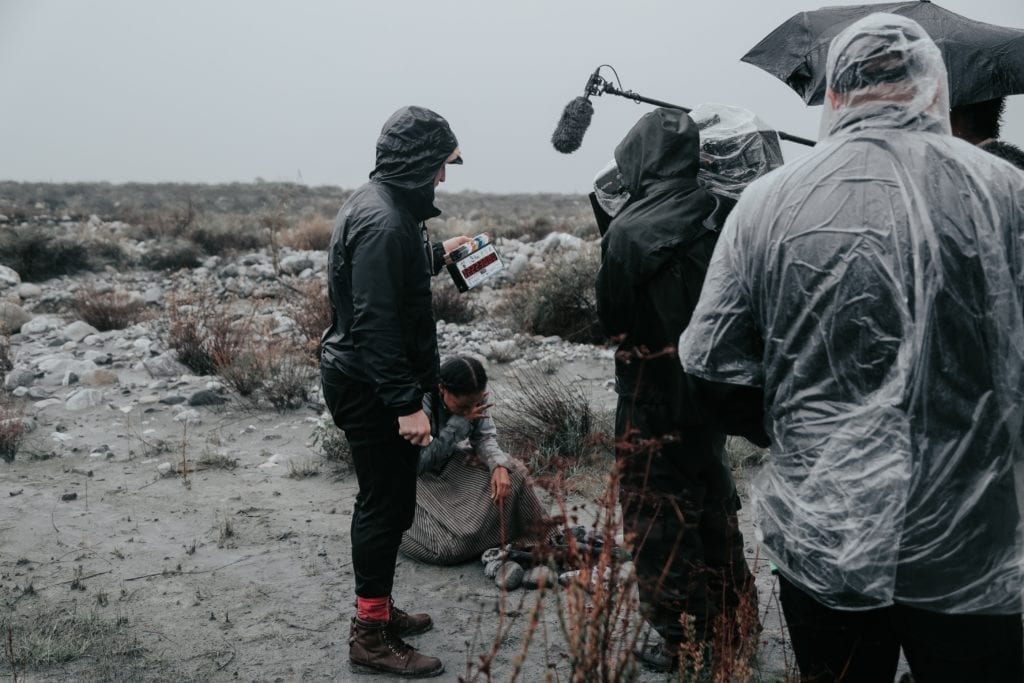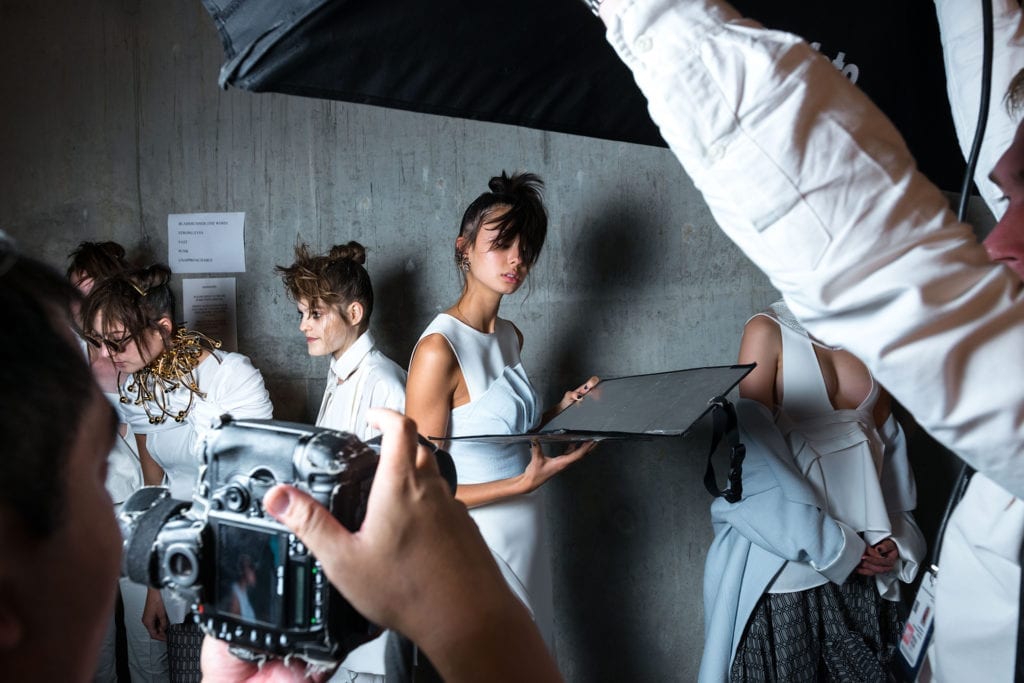Why It’s Important to Budget for the Art Department
If you could be transported into the world of any movie, which movie would it be?
Maybe you immediately thought of the buzzing industrial cityscape of Blade Runner or the sea of Guy Fawkes masks filling London’s quaint streets in V for Vendetta. Whatever movie world you thought of, it was the art department that made that movie’s settings come to life — showing how the art of film can be hidden in the elements we as an audience don’t see.
For the art department, a film is an opportunity to simulate worlds or create new ones entirely. Whether you’re looking to make a short film, a full-length feature film, or something else entirely, the quality of your media projects can be greatly enhanced by the hard work of a talented art department.
However, a lot of people, especially independent filmmakers, underestimate the value of their art department. You don’t need the most well-known actors or the best video camera ever for filmmaking as long as you’re able to cultivate a story and a world. No amount of money, film school, or film editing will save you if the bare bones of your movie aren’t there.
This is why the art department — and budgeting for it — is so crucial.
In his book Rebel Without a Crew (which has been considered one of the best books on filmmaking), independent filmmaker Robert Rodriguez tells the story of creating his hit film El Mariachi with only $7,000. El Mariachi grossed a whopping 2 million dollars, which shows that you don’t need to be loaded to break into the film scene — you just need to know how to manage your money.
Winging your film’s budget will cost you unnecessary money and energy

A lot of independent filmmakers think that because their movie will cost less than a Hollywood blockbuster production, they have to worry less about their film’s budget.
This is so far from the truth.
In fact, you as an independent filmmaker probably have to pay more attention to where your money is coming from and going because your money isn’t nearly as disposable. An extra thousand bucks lost on a failed location is pocket change for a lot of Hollywood’s filmmakers, but that same amount of money could end or seriously postpone your film project on the spot.
For this reason, it’s essential that you create a budget breakdown for your film, especially your art department. You won’t realize how much money securing locations, hiring a set designer, and buying props will be until all your money has dried up.
[fc id=’6′ type=’popup’][/fc]
Create a template for your film’s budget–or use our free template. Mark down all of the sources of your film’s funding and total how much you have. Get the essentials out of the way–camera, cast, crew, whatever else the movie can’t exist without. What you have left? Assign a chunk to your art department. Do not let your art department money come out of your own pocket, because it will want to.
Now that you have your basic film budget breakdown, detail your art department costs. Don’t let your budget template read simply, “Art department: _______ dollars.” Think about what you need, and ask yourself questions.
Is it a good idea to hire a set designer? Will hiring a set designer leave enough money for them to actually buy and design with?
How are you going to secure your locations? Are they going to cost anything? Can you find a different location if a certain one is too expensive?
What props are essential to the plotline? What will make the environment seem more authentic, more realistic? Where can you get cheap furniture that will enhance the location without looking tacky?
The most important thing is to plan all of your art department spending down to the last penny. Look at all, and I mean all, of your options, and compare them. Take a little from locations and give it to props, or vice versa — don’t be greedy. Because if you don’t budget, you’re going to be spending 20 dollars here, 50 dollars here, 100 dollars there, and you’ll bankrupt your film’s money pool before you get a chance to say, “Wow, I could’ve gotten that for a lot cheaper!”
Consider hiring a production designer

Not everyone has the liberty to hire a production designer for their film, but if you have a little extra money in the budget, it’s definitely something to consider. The official job description of a production designer is “the person responsible for the overall visual look of the production.” However, the work of these people goes far beyond the simple definition of “production designer.”
When creating a film, a production designer’s job is to formulate environments that blend seamlessly into the drama of the film. Take Hannah Beachler’s production design, for example. Her work on Black Panther won her an Academy Award for Best Production Design. But you and I both probably didn’t sit there thinking about the 30 million dollar budget she managed and directed. We just enjoyed the captivating world of the 2018 Marvel movie.
This is what you want to try to achieve by hiring a production designer, art director, set decorator, or even graphic artist for your film–design and production of such a quality that it becomes an experience or a feeling.
Another example is Richard MacDonald’s production design. Richard MacDonald, known for his set design of The Addams Family, was nominated for 3 BAFTA awards for Production Design. While his name isn’t nearly as known as some directors or screenwriters, the watching experience of MacDonald’s movies wouldn’t be nearly as enchanting without his work.
However, if your budget doesn’t provide the room to hire a production designer, there are ways to make yourself into a kind of art director for your own movie. The best thing you can do is study up. Watch movies known for their stellar production design. Read books written by those people who know what they’re doing, like The Blink of an Eye by Walter Murch and Film Art: An Introduction by David Bordwell and Kristin Thompson.
Worrying about your movie props now means you won’t have to worry about them on set

Okay, so you now have a more or less detailed template of what props you need and how much you have to spend on them, which means it’s time to buy your movie props. Some of them will be easy and cheap — if your character needs to be drinking coffee out of a mug, no problem. But some will cost you a little more money and energy. These are the ones you should take care of now so you’re not freaking out on set trying to find someone who you can borrow a prop World War II-era rifle from.
Speaking of guns, they’re probably one of the more difficult props to secure. You want authentic movie props, not something that looks like it could be called the FunBlaster 3000. With this in mind, realistic (and safe) movie prop guns are out there and fairly easy to obtain, to either buy or rent, especially through online vendors. But a thing to keep in mind that prop guns do require a bit more effort and money than other more common items might. This is another reason to budget for your art department in advance.
First of all, blank firing guns are defined and regulated by the government exactly the same as real guns are. This means that if you’re trying to get a hold of movie prop guns that fire blanks, you’ll be subjected to the same rules that any other gun owner or prospective buyer would. To add to that, you’re paying for what you get. If you want a higher quality, more realistic looking prop gun, you’re going to have to pay for it. It may be wise to rent a better quality gun over buying a lesser quality one. Indie film sets often use airsoft guns, and they look great! Just make sure you always have production insurance.
Movie prop drugs are another one of those props that may take a little extra effort to get your hands on. Depending on what kind of prop drug you want you may find it easier or more difficult to obtain. Regardless, shopping from online vendors is pretty straightforward — just make sure you’re going to a trusted, well-known company.
For prop guns, drugs, and other items of that nature, you need to budget in advance in order to figure out how much you can spend as well as give your vendors time to prepare and ship the prop.
Another good idea would be to secure a place that you can use as your movie prop warehouse. One of the last things you’d want is for your filming schedule to be thrown off track by a concerned neighbor stumbling across your prop AR-15 or fake bag of cocaine. Find a shed, a room, or even a corner to store all of your props. Not only does it keep your “illegal” items in a safe location, it helps you keep track of what you have and what you need, and prevents you from having to run around and waste time searching for something.
You need time to apply for grants and other sources of funding

Budgeting for your art department as well as the rest of your film in advance will give you a good chunk of time to apply for some film grants. For those of you filmmakers who don’t want the budget of your movie coming out of your own pocket, trying to get a grant is a great way to secure some funding.
There are lots of people and companies who are looking to support and celebrate independent movies through grants for filmmakers. Some will focus on specific lengths or genres, like short film grants or documentary film grants; for example, here at The Film Fund, we provide funding to filmmakers looking to make narrative or documentary shorts. And our submission process is a lot simpler than other grants or contests out there: you just write one sentence. Other grants might focus on raising up minorities, such as female or African American filmmakers. It might be a good idea to apply to some of these to narrow your pool of competition.
Even if your movie doesn’t fit into any of these categories, you’re still in luck, because there are organizations looking to provide all kinds of money to independent filmmakers. If you keep your eyes and ears open, you’ll find one that fits you. And that extra money may be a great way to ramp up the quality of your art department.
Regardless of where you get your money from, whether it be through grants or through other sources of funding, make sure to budget carefully — and don’t forget to include your art department.
One thought on “Why It’s Important to Budget for the Art Department”